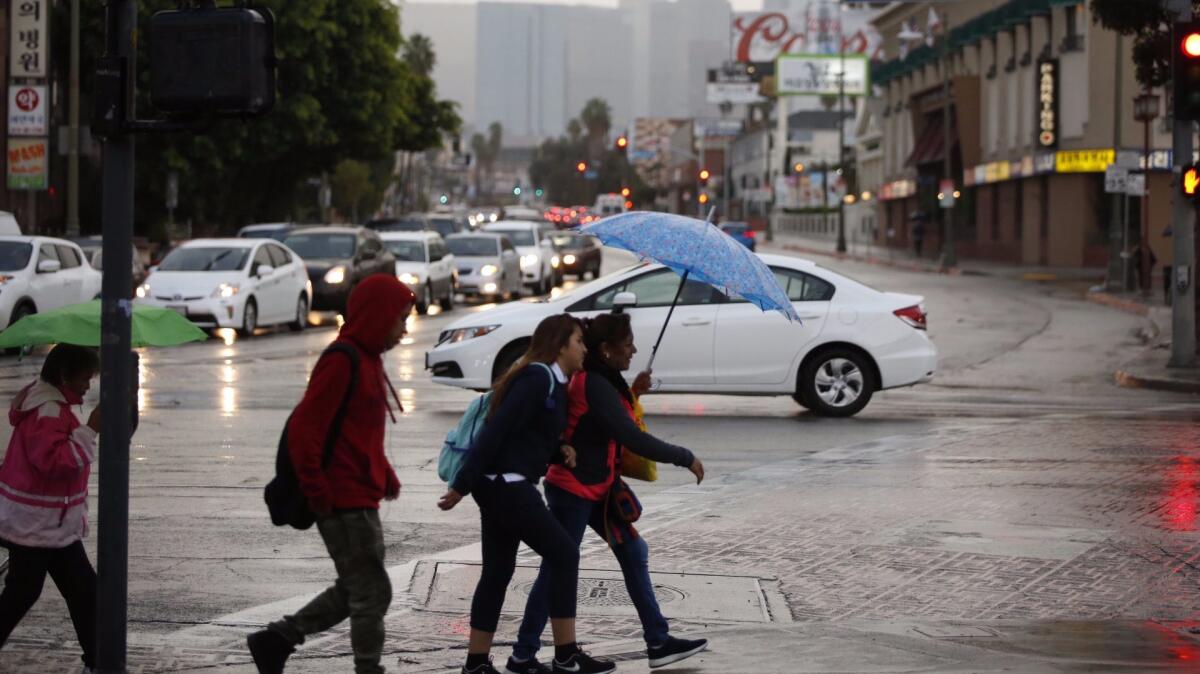Rain moves into Southern California, bringing danger to burn areas

- Share via
A much-anticipated rainstorm is set to move into Southern California on Thursday evening and move out by Friday afternoon.
According to the National Weather Service, the rain will be heaviest late tonight and will continue into the Friday morning commute.
A flash flood watch has been issued for burn areas in Los Angeles and Ventura counties.
The storm has already hit Central California, prompting some evacuations in areas that were burned by the Sherpa Fire earlier this year.
Officials expect less than a half-inch of rain in Los Angeles but more to the north, including 2 inches in San Luis Obispo.
Despite this storm, the region continues to face an unprecedented lack of precipitation, recording only 60% of average rainfall this month. By contrast, communities from the Bay Area north to the Oregon border have recorded 200% to 300% of the average this month, according to the National Weather Service. More rain is expected in the north this weekend.
It’s a pattern that Californians saw last winter, when the much-hyped El Niño phenomenon was expected to soak Southern California but instead steered north, blanketing the northern Sierra Nevada in snow and leaving Angelenos and their neighbors in the dust.
Rain and snow in Northern California are considered essential to easing the drought because the state’s major networks of dams and reservoirs are located there, providing water to many other parts of the state. While rain in Southern California is also important, much of it flows into storm drains and into the ocean.
Since Oct. 1, the start of the water year — which forecasters use to measure annual precipitation — cities and mountain communities from the Bay Area to the Oregon border have been drenched by an atmospheric river of tropical moisture. It’s rained more than 18 inches this month in Gasquet, a rural community in Del Norte County, and 12 inches in Crescent City, Kennedy said.
The rainfall was enough that the U.S. Drought Monitor considered the northwest corner of California, or about 7% of the state, to be in normal condition instead of “abnormally dry” or worse. That much of California has not been considered normal since March 2013.
Sign up for Essential California
The most important California stories and recommendations in your inbox every morning.
You may occasionally receive promotional content from the Los Angeles Times.








